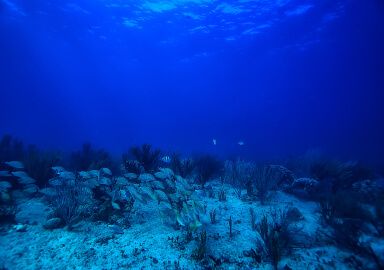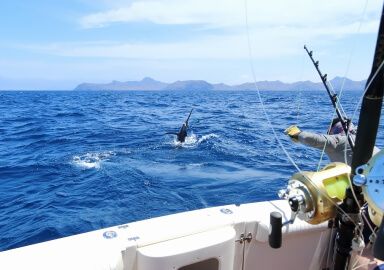California Sheephead
Spectacularly colored, the California sheephead is a popular sport angling and commercial species in the inshore waters in and around California
View 2 listings
2
listings
–
price starting from
1
countries
Where and When?
California sheephead are distributed in the eastern Pacific Ocean along the North American coast, from Monterey Bay south to the Gulf of California and Guadalupe Island. The greatest abundance is along the southern California coast. California sheephead commonly inhabit the depth range is 18-61 m. (60-200 ft.), but there is some individual lateral movement to deeper waters during the spawning season. The species prefers rocky or gravelly substrates and is often found in kelp beds, and around any suitable structure where males establish territories and attempt to attract females. California sheephead usually stay close to the ocean bed searching for food and “shepherding” their females. The species is most active during daylight and probably becomes almost dormant after dark. Fishing for California sheephead is best in the warmer months, as the species feeds more actively at this time, but it can be caught throughout the year, particularly in the southern areas.
About California Sheephead
The California sheephead (Semicossphus pulcher), is a large wrasse of the Labridae family. The word “pulcher” in its scientific name means “beautiful”, and indeed its colours can be absolutely spectacular. Males, which are larger than females, have black heads and tails but a striking reddish or orange mid-section. Females are a standard dull pink with pale bellies. Both have a typical elongate, laterally compressed “wrasse-type” body, but mature males have a large hump on their “forehead”. The teeth are formidable, strong and sharp for biting off or crunching up food items. All fish are born female and will develop into males as they reach adulthood. This occurs at varying sizes depending on social, genetic and environmental factors. The California sheephead can attain 1m. (3 ft.) in length, and a mass of 16 kg. (35 lbs.). These fish feed mostly on benthic (bottom-living) invertebrates such as urchins, crabs and even barnacles. Spawning usually takes place in deep waters between June and September; during spawning, California sheephead males gather and guard a harem of several females.
How to Catch?
Nearly all targeted California sheephead fishing is carried out from shore-based smallish boats and kayaks, few are caught from the shore. The species can grow large and, as they are often near structure or dense kelp, strong tackle is required to avoid disappointment. A medium to heavy spinning rod with a robust, good quality reel and strong braid is best. While jigging with plastics or hard spoons can be used, most people prefer the use of natural baits, mostly dead or prepared. Wherever they are, California sheephead will be close to the ocean floor and so dropping the bait to the bottom and raising it a couple of feet or so is best. The favoured baits are those food items most readily available in the locality of the fishing. Urchins, and some other natural foods, are difficult to put on as bait and keep on the hook as it descends. Squid is popular as it is tough and stays on the hook and crabs also work well. The species often has a gentle bite, even from a large specimen, and so braid is better than nylon and the angler needs to be alert. The capture of a large male sheephead will probably have resulted from a strong, long and memorable fight and the photo of this charismatic species will be one to show your friends with pride.




